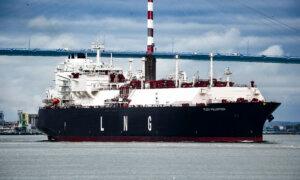The updated analysis was needed after preliminary data from the London Stock Exchange Group (LSEG) indicated U.S. producers exported a record monthly amount of liquefied natural gas in March, more than 70 percent to Europe, surpassing their December 2023 record.
That indicates a natural gas market growing faster than previous Energy Information Administration, LSEG, and S&P Global forecasts anticipated, although significant increases in U.S. liquid natural gas exports in 2025 were universally anticipated.
With Plaquemines LNG Phase 1 starting operations in December and functioning at 140 percent capacity in March, Corpus Christi LNG’s Stage 3 producing its first LNG in February, and Golden Pass LNG expected to come online soon, last month’s sharp surge still surprised some analysts.
President Donald Trump’s lifting of the Biden administration’s LNG export permit pause cleared the way to complete the three underway liquefaction plant and export terminal projects.
Trump’s “drill baby drill” policy seeks to boost fossil fuel production, especially natural gas, to lower domestic electricity costs and pay down the nation’s nearly $37 trillion debt with exported LNG. The United States is the world’s largest producer and exporter of natural gas.
“With more favorable conditions under the new administration, U.S. LNG exports are forecast to double by 2030, with projects currently under construction accounting for approximately 60 percent of that projected growth,” S&P Global said in its study, which was co-sponsored by the U.S. Chamber of Commerce.
The study projects the U.S. LNG industry will contribute $1.3 trillion to the nation’s economy by 2040, with 90 percent of every dollar spent in domestic supply chains, creating an annual average of 500,000 jobs, including nearly 40 percent in “non-producing states.”
There are now eight large U.S. LNG export plants in Texas and Louisiana. Six other Gulf LNG plants could be proposed within two years, Reuters reports. A state-sponsored export terminal at the end of an 800-mile pipeline in Alaska and a revived project in Oregon are vying to become the first U.S. LNG ports on the West Coast.
Shell stated in its LNG 2005 outlook that worldwide demand will increase by about 60 percent by 2040. S&P Global said U.S. producers could supply more than a quarter of that global demand.
Consumers Pay the Price?
According to the Energy Information Administration’s March short-term outlook, annual LNG demand exceeds supply in both 2025 and 2026, leading to lower natural gas inventories, and increasing prices in both years.In fact, the administration projects the “Henry Hub natural gas spot price”—the market price-setter—will double by March 2026 with nearly all growth destined for high-dollar export.
“Conversely,” it states, “more LNG exports would result in lower volumes in underground storage and likely higher natural gas prices.”
“The cycle this time of year is typically very poor” for natural gas prices, he said. “After all, I’m doing this analysis here with the window open. So, obviously, heating demand in America is starting to shrink. If that’s going to be the case, that has a major effect on natural gas.”
S&P cites two obstacles in growing a domestic natural gas market that can affordably meet quadrupling demand for electricity while also generating billions in LNG export revenues—state and federal regulatory and litigative challenges, and pipeline “constraints.”
Trump has issued several deregulation executive actions, and there is bipartisan support in the GOP-held Congress for federal permitting reform, particularly related to the Clean Water Act and National Environmental Policy Act.
Eliminating “regulatory, legal, and environmental barriers” could save more than 100,000 jobs and retain $250 billion annually in economic activity that will otherwise go elsewhere, S&P Global’s study states.
The pipeline constraints are more regional—Permian producers in Texas are seeking outlets to the sea for export; Marcellus/Utica producers in Pennsylvania are seeking ways out of state policy straitjackets and to markets—especially the power-hungry Northeast.
S&P Global said there’s enough “low-cost gas reserves” in the Marcellus and Utica formations in New York, Pennsylvania, West Virginia, and Ohio “to meet nationwide demand for more than 17 years.”
However, because they “are being developed at a suboptimal rate,” consumers in Boston, Chicago, and New York City “could pay 160 percent higher than the national gas market in peak months” beginning this summer, it warns.







